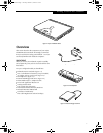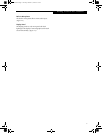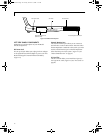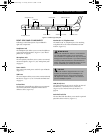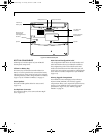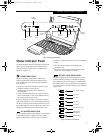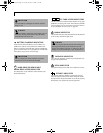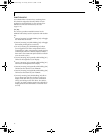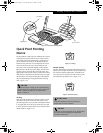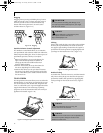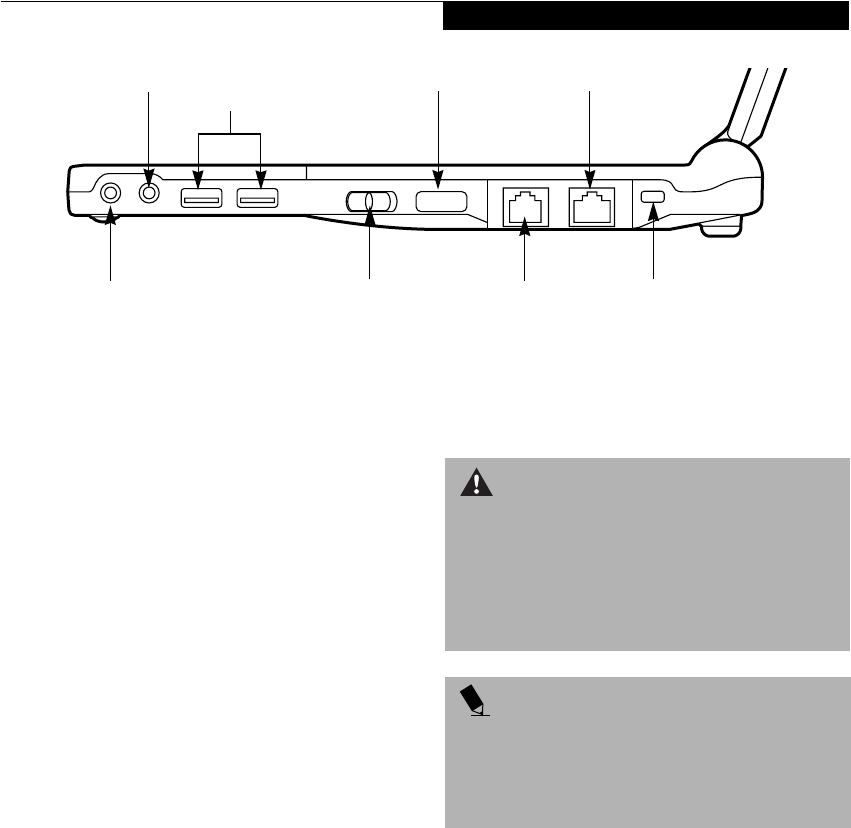
11
Getting to Know Your LifeBook
Figure 2-7 LifeBook right-side panel
RIGHT-SIDE PANEL COMPONENTS
Following is a brief description of your LifeBook’s
right-side components.
Headphone Jack
The headphone jack allows you to connect headphones
or powered external speakers. (Figure 2-7) See “Head-
phone Jack” on page 47.
Microphone Jack
The microphone jack allows you to connect an external
mono microphone. (Figure 2-7) See “Microphone Jack”
on page 47.
Power Switch
This switch is the main power switch for your LifeBook.
(Figure 2-7)
USB Ports
The two USB ports allow you to connect Universal Serial
Bus devices. (Figure 2-7) See “Universal Serial Bus Port”
on page 47.
Infrared Port
The fast IrDA compatible port allows you to communi-
cate with another IrDA compatible infrared device
without a cable. (Figure 2-6)
Modem (RJ-11) Telephone Port
The Modem (RJ-11) telephone port is for attaching
a telephone line to the internal multinational 56K
modem. (Figure 2-6)
LAN (RJ-45) Port
The internal LAN (RJ-45) port is used for an internal
Fast Ethernet (10/100 Base-T/Tx) connection.
(Figure 2-6) See “Internal LAN (RJ-45) Port” on
page 46.
Anti-theft Lock Slot
The anti-theft lock slot allows you to attach a optional
physical lock down device. (Figure 2-7)
Headphone Jack
Microphone Jack
Power Switch
USB Ports
Anti-theft Lock
Infrared Port
Modem (RJ-11) Port
LAN (RJ-45) Port
WARNING
The internal multinational modem is not intended for
use with Digital PBX systems. Do not connect the
internal modem to a Digital PBX as it may cause serious
damage to the internal modem or your entire LifeBook.
Consult your PBX manufacturer’s documentation for
details. Some hotels have Digital PBX systems. Be sure
to find out BEFORE you connect your modem.
POINT
The internal modem is designed to the ITU-T V.90
standard. Its maximum speed of 53000bps is the
highest allowed by FCC, and its actual connection
rate depends on the line conditions. The maximum
speed is 33600bps at upload.
%6HULHVERRN3DJH7XHVGD\2FWREHU$0







